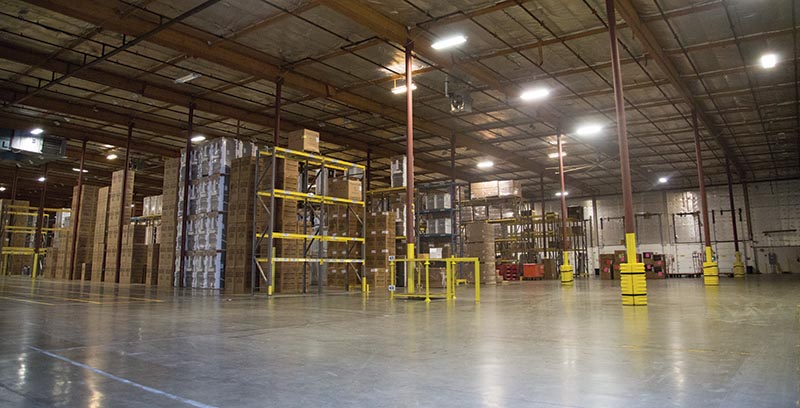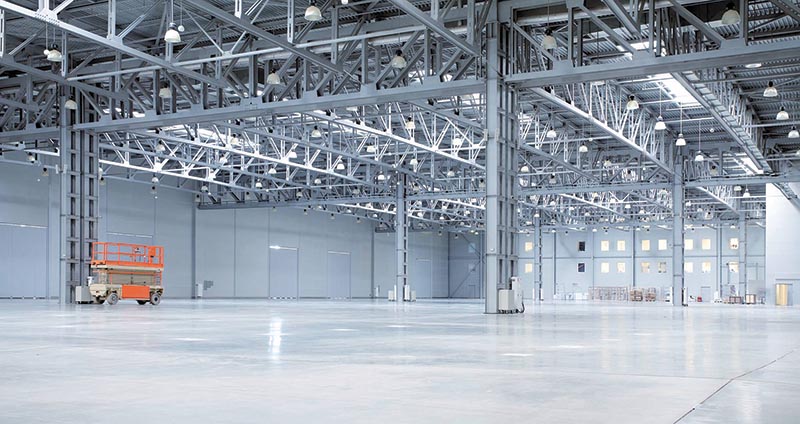On-Demand Warehousing Prepares for Takeoff
What could KFC and Exploding Kittens possibly have in common? On-demand warehousing, of course.
As different as their circumstances and products might be, both companies have used on-demand warehousing to fill a short-term need. At KFC, the problem was an untimely shortage of warehouse space that it had been promised by a third-party logistics provider (3PL). For Exploding Kittens, the problem was no warehouse space to fill an overwhelming surge of orders when the product launched.
If you haven’t heard of on-demand warehousing, you’re not alone. It is a nascent concept with plenty of promise to become a full-fledged industry segment. However, it’s also already a reality from Manhattan to Mumbai and Melbourne as well as most everywhere in between. KFC, by the way, relied on it in England while Exploding Kittens was in the United States.
On-demand warehousing got its start in 2013. “That’s when we started Flexe and created the category,” says Karl Siebrecht, co-founder and CEO.
From the beginning, on-demand warehousing has been well received. While many startup companies rely on it, so do a large number of Fortune 1000 companies including some of the top 100. The overall mix includes e-commerce companies as well as more traditional business-to-business (B2B) companies.
On-demand warehousing has not gone unnoticed for its progressiveness. Earlier this year, Forbes published its 30 Under 30 list in manufacturing and industry. Sean Henry, 21, and Jacob Boudreau, 20, are on the list as co-founders of Stord, the Atlanta-based on-demand warehouse player. By the way, they founded the company in 2015.
Clearly, on-demand warehousing is not something to be trifled with. It’s not a fad, it’s a new category.
“There is a lot of demand from small companies that need to spend only $5,000 or $10,000 a month on warehousing space,” explains Jonathan Rosenthal, CEO of Warehouse Exchange. The company, founded in 2016, uses an electronic platform as a matchmaker between those companies with interim needs and those with excess warehouse space that are part of the Warehouse Exchange network.
Rosenthal calls it the warehousing equivalent of WeWork for office space. Some compare on-demand warehousing to Airbnb. Others call it the Uberization of warehousing. But everyone agrees it’s a direct response to Amazon’s network of distribution centers positioned ever closer to customers for order delivery in two days or less.
Getting started
It’s fair to say that every company in on-demand warehousing is a startup. That’s even true for the UPS entry announced this summer—Ware2Go.
“The initial idea was to find warehouse space for companies with some inventory overflow,” says Siebrecht. “But it didn’t take long to see the business evolving into a full-fledged fulfillment service,” he adds.
In fact, on-demand warehousing is evolving as you read this. Some companies use it short term. Others longer term. Some just want warehouse space. Others want fulfillment services, too. And with Ware2Go’s entry, shipping software on certain platforms has expanded to become physical delivery of orders with the UPS trucks of its parent company.
Despite these differences in offerings, “On-demand warehousing at its core is all about matching up companies with excess warehouse space with companies that have short-term excess inventory. It’s a win-win.” That’s according to Nick Vyas, executive director and co-founder of the University of Southern California’s Marshall Center for Global Supply Chain Management.

On-demand warehousing is all about matching individual company needs with excess warehouse space.
And there’s plenty of excess warehouse space out there. “When a company builds a warehouse or distribution center, one of the great dilemmas is how big is big enough. Getting it right is not easy, and today the annual utilization rate nationally for warehouses is 62%,” says Vyas.
Siebrecht says Flexe does an annual survey of empty U.S. warehouse space. He puts the number at 20% to 30%. Using real estate firm CBRE’s 19.1 billion square foot number for total warehouse space, that means empty space totals somewhere between 3.8 and 5.7 billion square feet. That’s a lot of opportunity for on-demand warehousing.
A large portion of that excess is at 3PLs. On-demand warehousing allows 3PLs and others to offer premium warehousing space to those who need it now. And the need can result from seasonal peaks, new product launches and warehouse consolidations, to name three common sources, says Siebrecht.
Meanwhile, a clear surge toward outsourcing of warehousing capacity is at play, says Henry of Stord. He cites 3PL expert Armstrong & Associates’ assessment that 86% of companies today use some form of external warehousing, mostly 3PLs.
But interestingly enough, 3PLs also have excess space and are partners with on-demand warehouse companies. While some may think that this is a threat to 3PLs, it is not generally seen that way. “We are not displacing 3PLs but making them more flexible, scalable and digital,” says Henry.
While still early in the game, on-demand warehouse networks can be quite substantial. Flexe already has more than 1,000 warehouse locations in its network, says Siebrecht. Warehouse Exchange has 200. You can assume that both, as well as those at other companies, are adding to their networks.

Empty warehouse space is somewhere between 3.8 and 5.7 billion square feet,according to an annual survey by Flexe.
The Amazon effect
But space availability is only part of the on-demand warehousing equation. There’s also the Amazon effect.
The e-commerce behemoth has roughly 175 warehouses in the United States. All are positioned for rapid order delivery with two-day, one-day and even one-hour delivery at the top of the pyramid.
Especially if e-commerce is your game, how do you compete with that network?
On-demand warehousing is the answer, says Flowspace founder and CEO Ben Eachus. “Companies need more distribution points and need to shorten their delivery times,” he explains. On-demand warehousing bridges that gap and no company actually needs to build or run its own warehouse, Eachus continues.
“No one will ever catch Amazon and its distribution network,” says Gene Tyndall, president of MonarchFx. “But there are opportunities to come pretty close by building a separate network that offers alternative distribution schemes,” he adds.
There’s still another link between Amazon and on-demand warehousing. On the one hand, Amazon sells and distributes directly to customers the inventory that it owns. But Fulfillment by Amazon (FBA) is a separate program. With FBA, Amazon manages inventory at its DCs for companies that sell on Amazon Marketplace.
Just to be clear, FBA is on-demand warehousing. But it comes with its own particular rules and fees. For instance, costs for participants increase if inventory doesn’t turn.
In those cases, says Siebrecht, Flexe and other on-demand warehousing companies can help Marketplace companies manage their slow-moving and excess inventory close to the Amazon DC of choice. On the flip side, this co-located, on-demand warehouse scenario minimizes the chance for stockouts at the Amazon DC. It’s all about inventory rotation.
That’s all on the business-to-consumer (B2C) side of on-demand warehousing. There’s also the B2B side, says Nick Basford, vice president of global retail and e-commerce at Ware2Go.
He explains that traditional business-to-consumer (B2C) transactions are in the $80 to $150 range. But B2B transactions are in the thousands of dollars. “Meanwhile, B2C positions inventory closer to the buyer than B2B has,” says Basford. “On-demand warehousing is an opportunity to change that and deliver very-high-value orders within two days,” he adds. It doesn’t hurt that B2B is clearly on a growth path.
Making it work
On-demand warehousing may be relatively new, but don’t think it’s not quite up and running today: It is. But it also works differently than traditional warehouse operations.
To begin, these companies find and rent out 300 pallet positions (or fewer) for six months (or less). But that’s not a cap. Thousands of pallet positions and a long-term (a year or more) are accommodated just as easily.
This is quite a different model than 3PLs. They pursue a long-term lease (three- to five-years typically) and a commitment for many thousands of square feet. Any technology, hardware or software, comes at an additional cost. In addition, the negotiation, contracting and start-up time takes some time to implement.
Henry calls that “a broken process.” He and others emphasize the importance of flexibility at all stages.
“On-demand warehousing is about rethinking how goods are moved by increasing velocity and throughput while increasing flexibility. We’re taking gross inefficiency and unused capacity out of the warehouse ecosystem,” says Rosenthal of Warehouse Exchange.
That rethink starts with an electronic platform for matching those companies that need space with those that have space. Rosenthal calls his company’s entry here an automated warehousing marketplace. And while Warehouse Exchange limits its model to being that platform, others offer a range of services.
Stord, in particular, similarly started as a broker but has expanded into a range of services including custom logistics solutions. “We strategically align with companies to fulfill their needs and optimize their distribution network,” says Henry. Stord is not alone here.
At the most basic level, warehouse management systems (WMS) are a common thread for several companies in the space. The majority of these packages are homegrown, typically limiting their capabilities compared to traditional best-of-breed packages. However, that simplicity serves an important purpose.
“One of the great advantages of on-demand warehousing is rapid startup,” says Eachus of Flowspace. “We can get a new company up and running in its new space in 24 hours. And, an easy-to-use WMS is part of what makes this possible,” he adds.
But there are other variations here.
Siebrecht describes Flexe as “fundamentally a software company with deep logistics experience.”
Offering a range of services, MonarchFx offers “distributed logistics with intelligent technology,” says Tyndall. “Our on-demand model can place products wherever a company needs them using 3PLs,” says Tyndall.
Robots integrated with an Internet of Things network figure prominently on the warehouse floor as do advanced sortation technologies. A best-of-breed WMS manages fulfillment including labor requirements. Delivery is done by UPS and same-day delivery by DeliveryCircle. The first of the MonarchFx locations is on track to open before the end of the year.
Over at Ware2Go, the range of services is as broad as it can be, explains Basford. It is, after all, a division of UPS, which makes the delivery segment indigenous to its overall solution. “We cover every state and can deliver anywhere in two days,” he adds.
Just how big can on-demand warehousing get is anybody’s guess. However, Vyas of USC expects a steep trajectory. “Within five years it will be a standard practice,” he says. “People will understand this paradigm shift in the supply chain and they will jump on the bandwagon.”
Companies mentioned in this article
Article topics








